The UN at work 1970-71
All images are courtesy of the UN's Blue Beret magazine. The low image quality of these early pictures is due to the printing process of the 1970s.
The place names are as reported and may differ slightly from the official name.

Finnish soldiers patrol a steep and rugged section of the Kyrenia mountain range.

Outside Zygi, Turkish Cypriot children dance watched by a cavalry patrol.
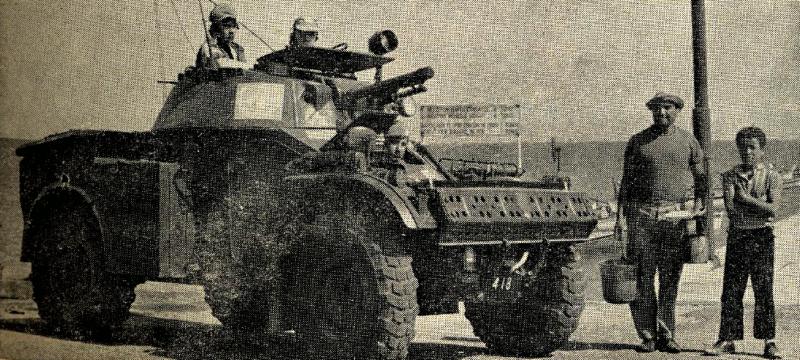
Local Zygi fisherman chat with an Irish UN patrol.

A young UN soldier from the 3rd Battalion Light Infantry at an OP at Stavrokono.
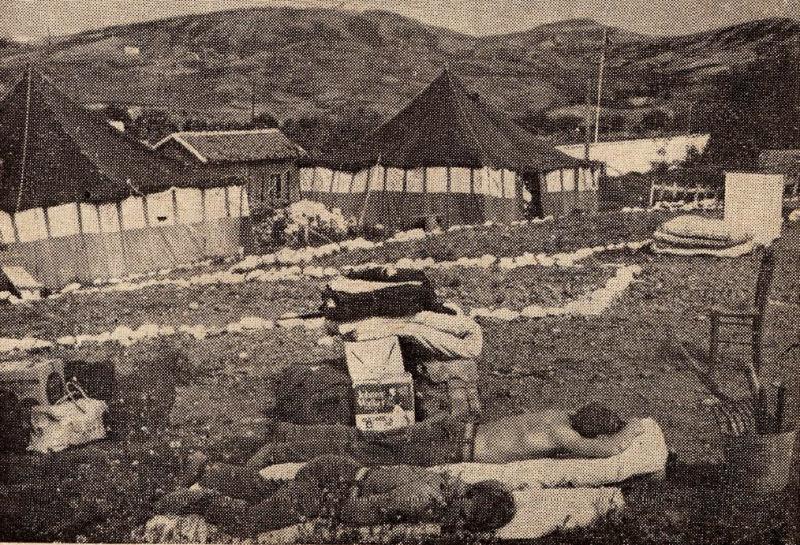
Swedish soldiers enjoy some freetime sunbathing at their OP.

The OP behind the support camp at Anadhiou. To reach this remote OP involves a drive of several miles over rough track.
(See Then_Now)
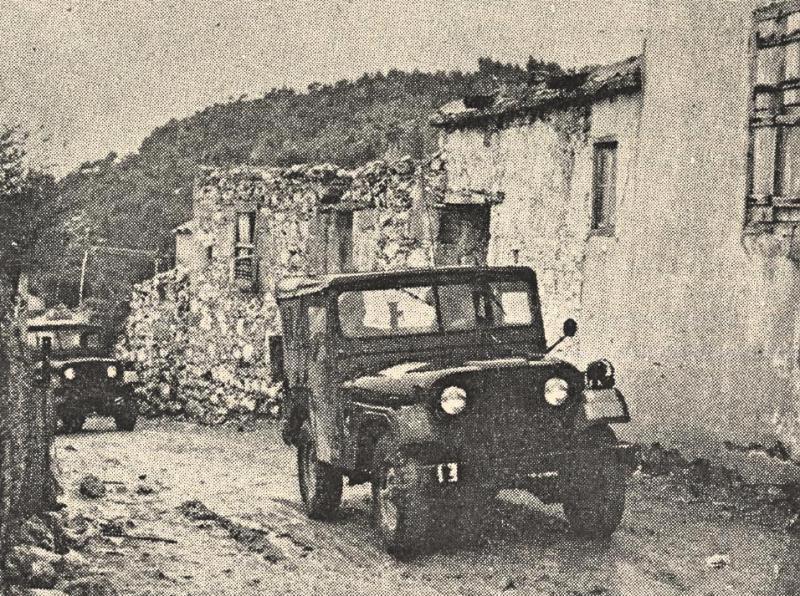
Canadian UN troops patrol the remote villages on the Kyrenia mountains.
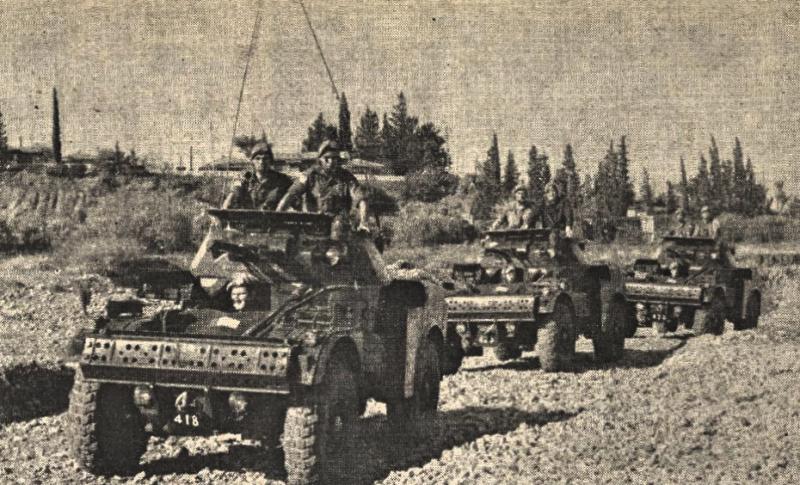
Panhard armoured vehicles of the Irish UN, patrol the Lefke area from their Xeros base.
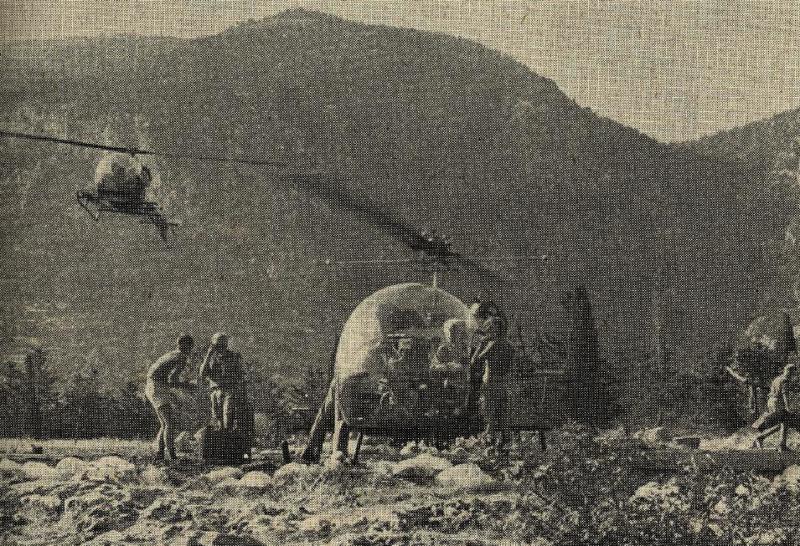
Remote OPs in the Kyrenia range are resupplied by helicopters of the UNFICYP Aviation Flight.
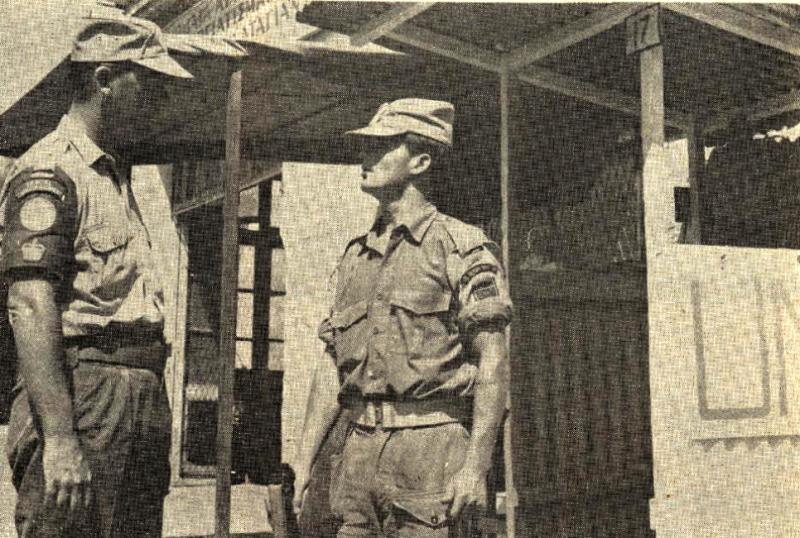
An Irish and Canadian UN soldier at the Paphos Gate OP in central Nicosia.
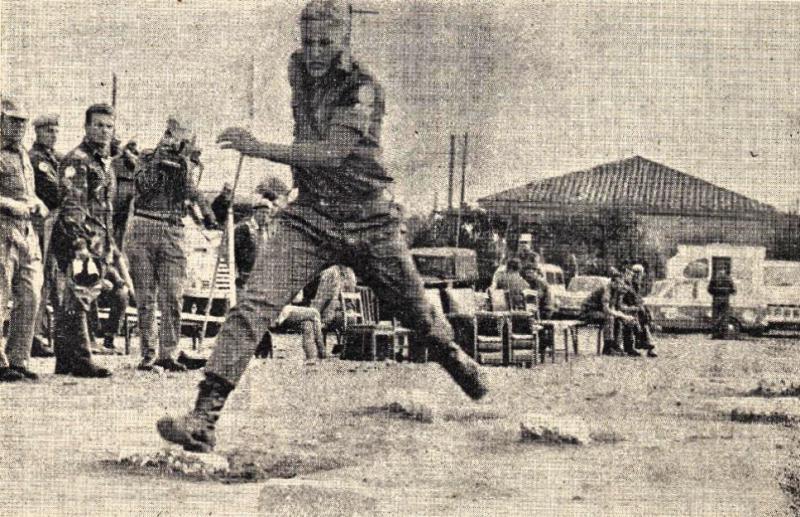
An obstacle race competition organised by FINCON provided some light relief.
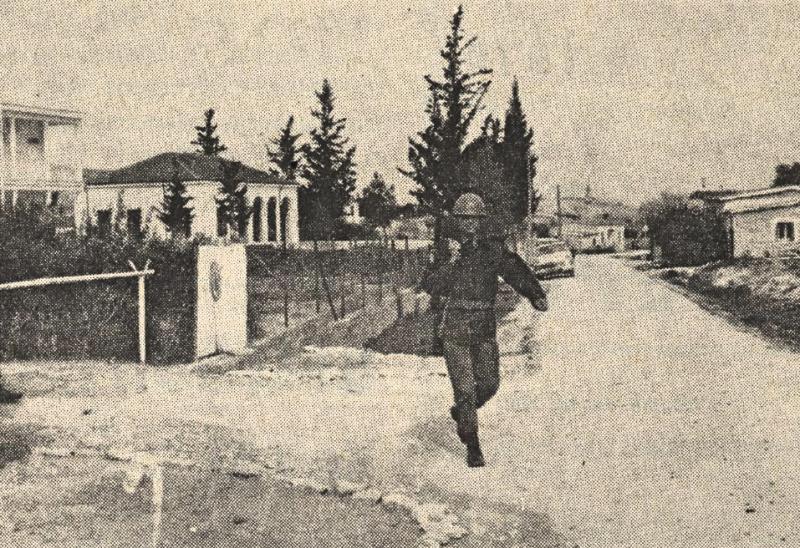
A Danish soldier in Louroujina on a final patrol before being replaced by other UN forces.
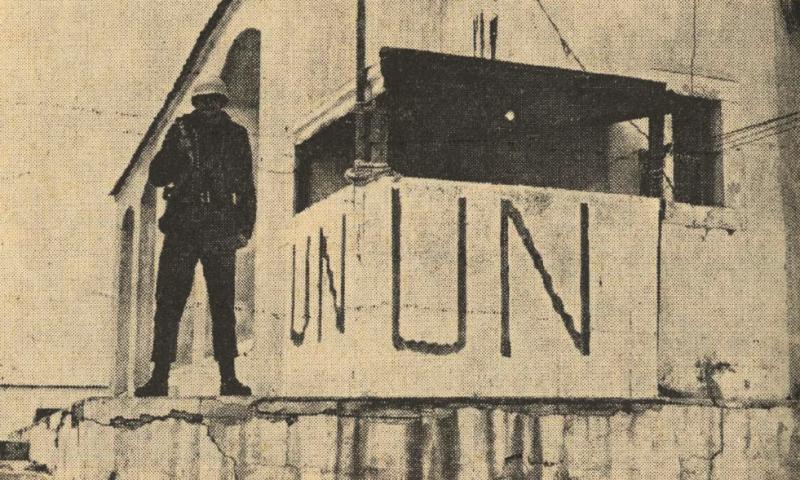
Although captioned as the UN OP next to the mosque in Louroujina, following a visit, I believe it is the Church of the Holy Cross on the hilltop between the village and Lympia.
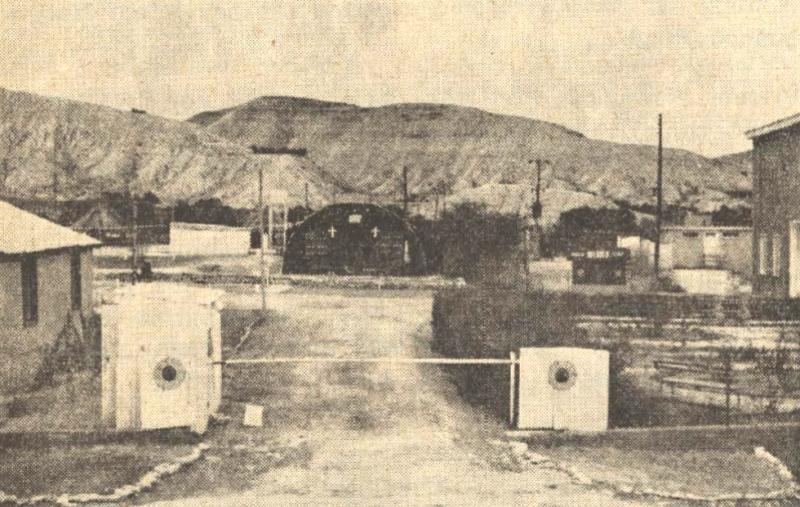
The Danish camp in Louroujina with the "moonlands" in the background.
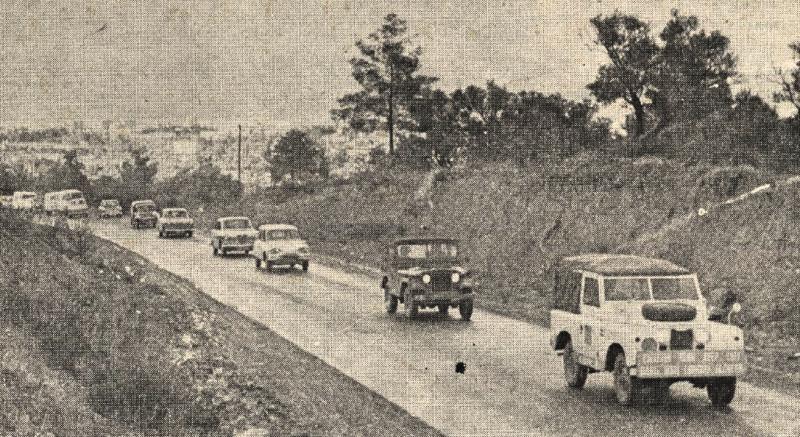
One of the last convoys to be led by Canadian troops leaves Kyrenia for Nicosia.
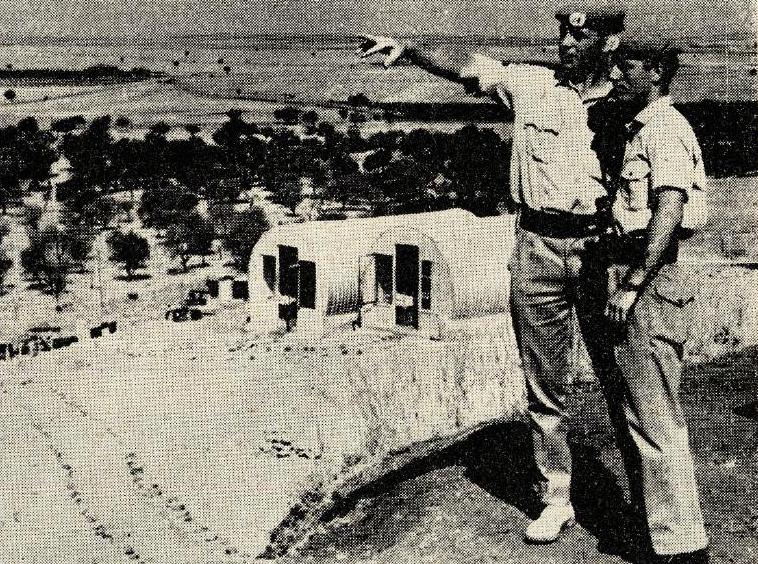
Soldiers of the 3rd Battalion Light Infantry at an OP on Mandria Hill, close to Paphos.
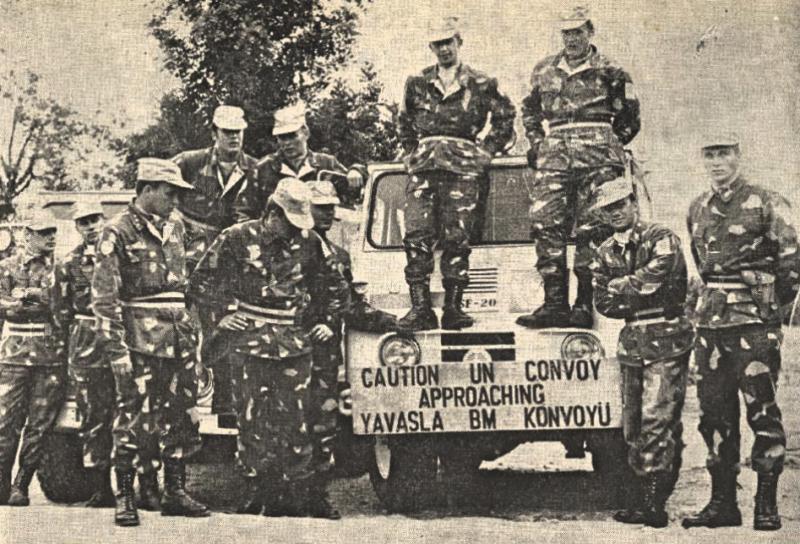
Finnish soldiers take over responsibility for the Kyrenia convoys.
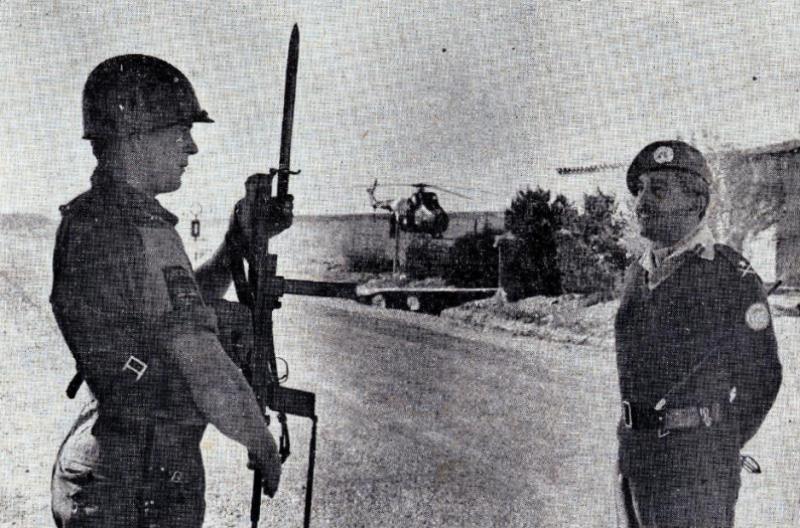
Major General Prem Chand visits Swedish UN soldiers at OP 101 Chatos on the Nicosia to Bogaz road.
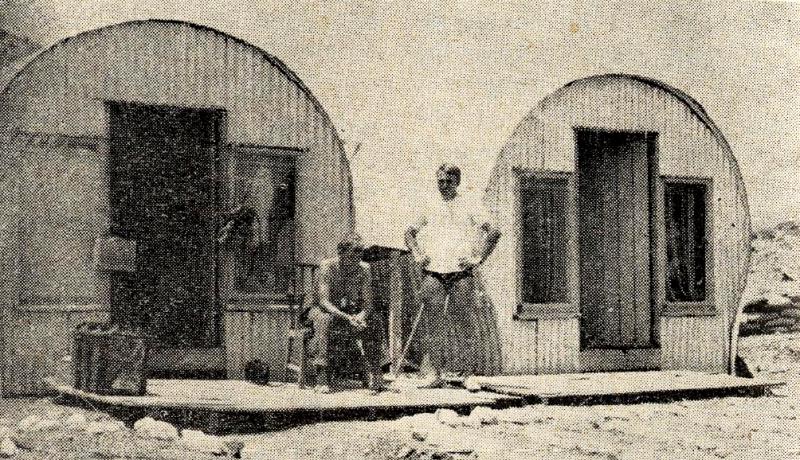
The isolated OP2 accommodation in the Kokkina enclave.

UN soldiers and visitors look out over Lefke.
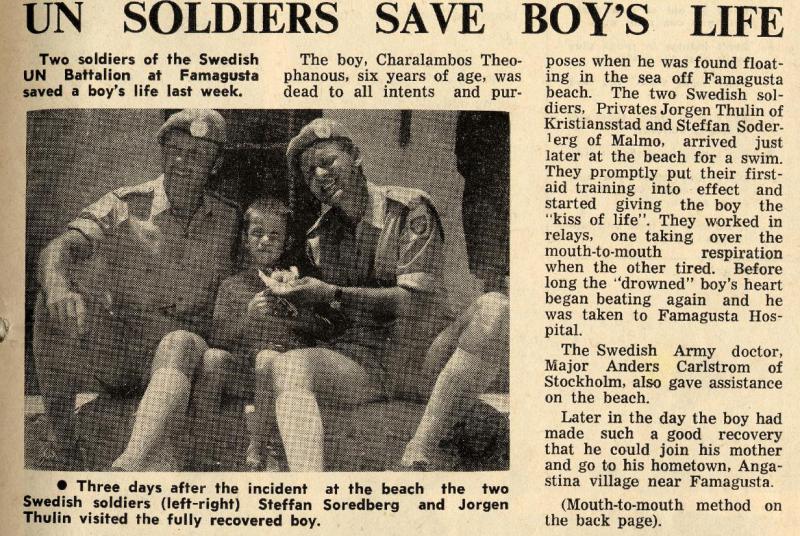
A 'good news' story involving Swedish UN soldiers.
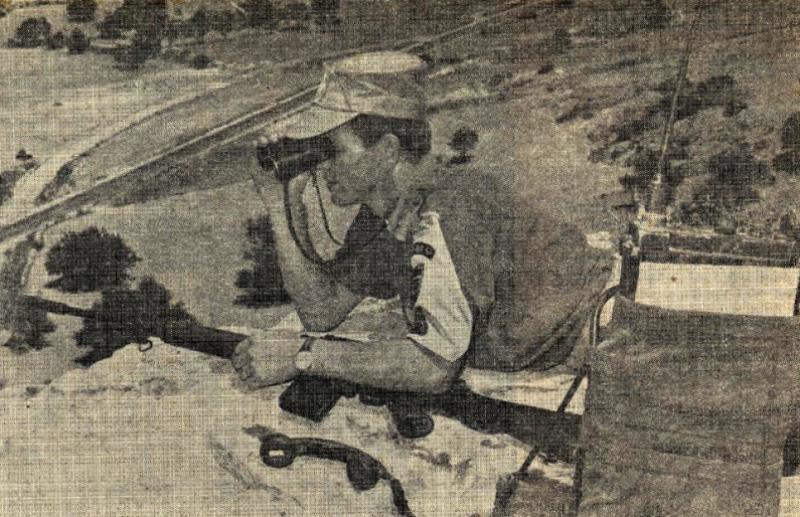
An Irish UN soldier observes from the 'Crown Hill' OP, 200ft above the Limassol - Nicosia Road.
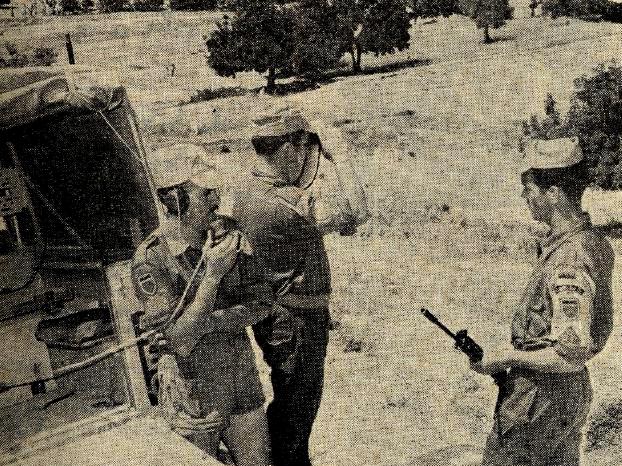
Irish UN soldiers at "Bunker Hill" overlooking Kophinou.
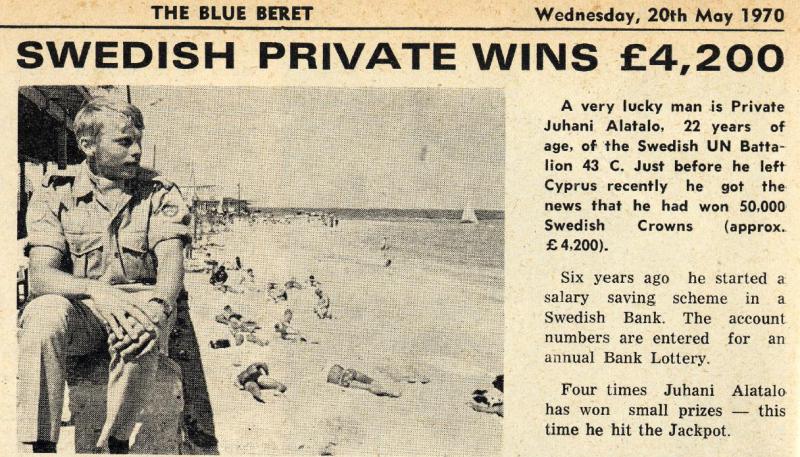
Another Swedish 'good news' story.

The CO's inspection of troops at the Kophinou compound.
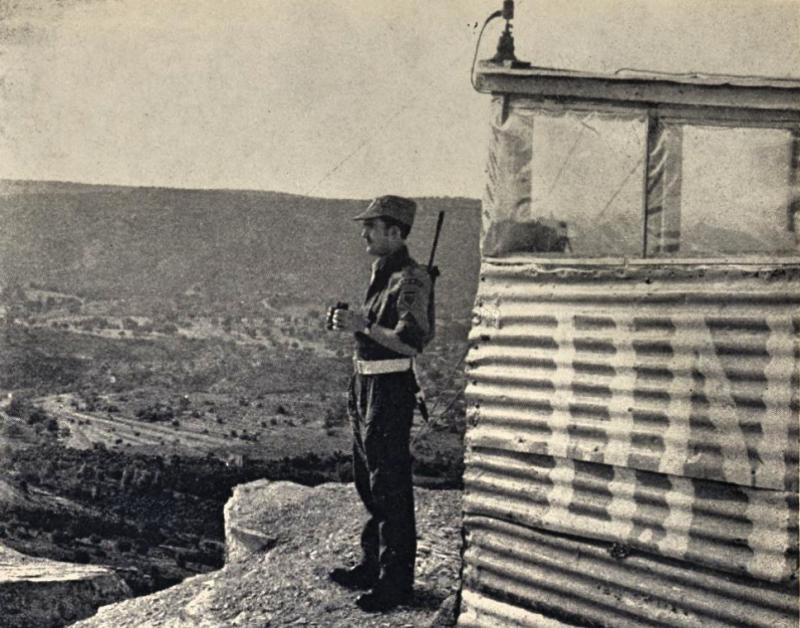
An Irish soldier monitors movement along the road leading to Ayios Theodhoros.
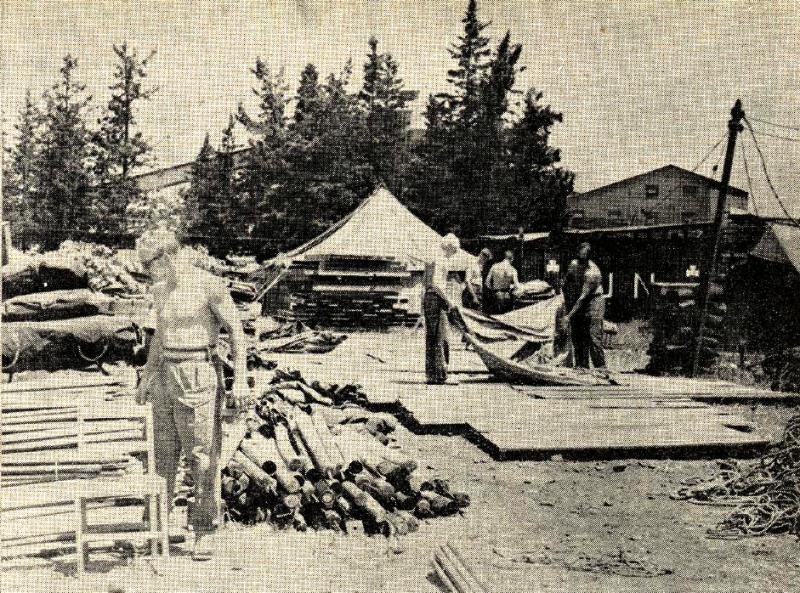
Danish soldiers pack up their camp at Xeros.
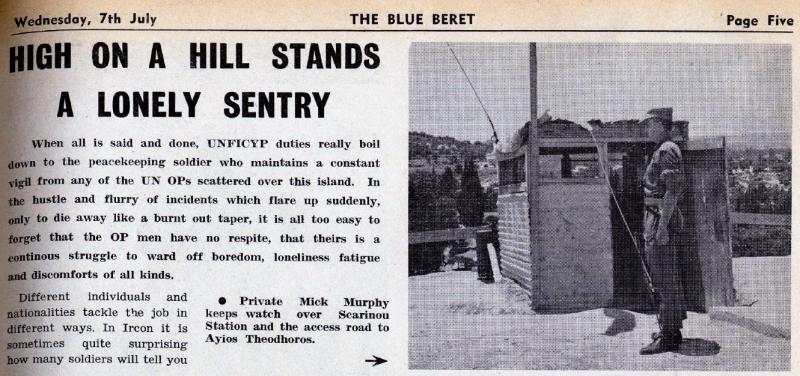
A self explanatory article.
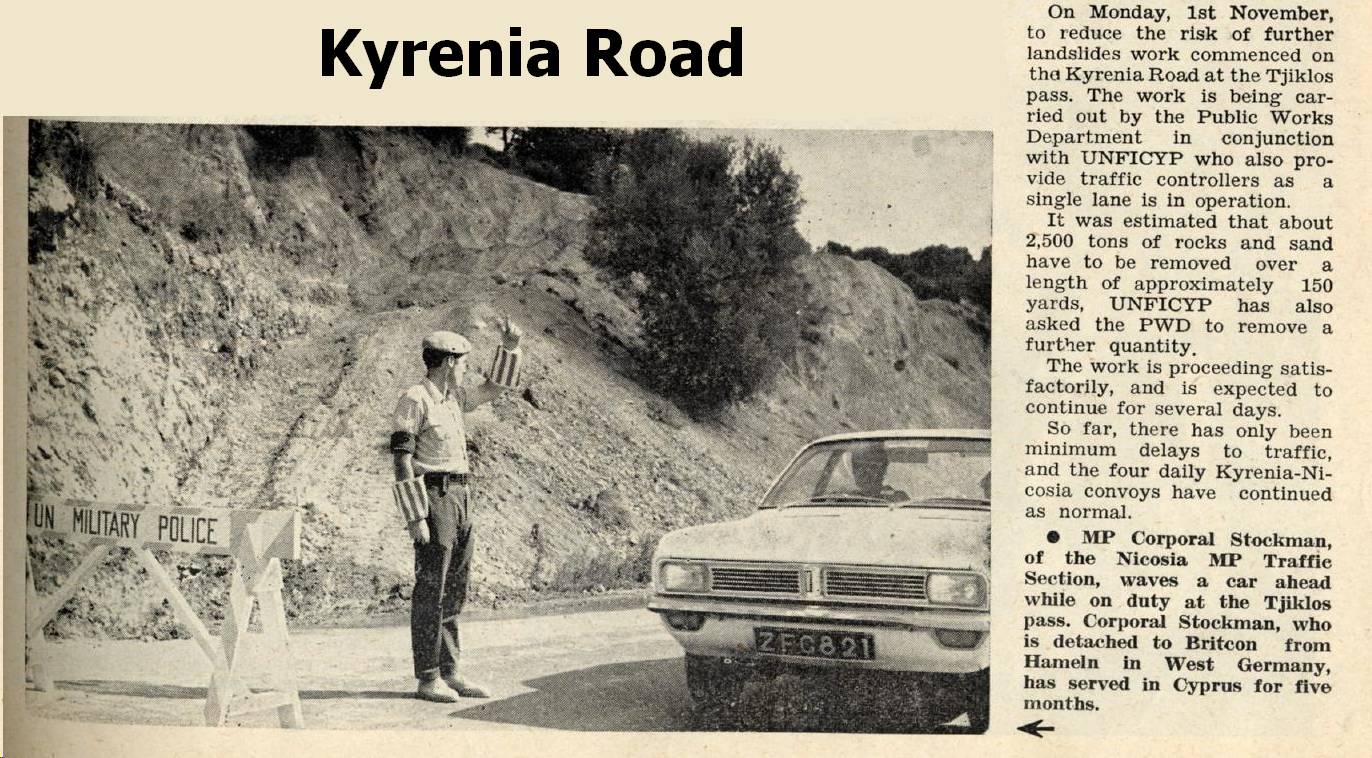
An RMP soldier on detachment from BAOR controls traffic at the site of a landslide which blocked the Kyrenia-Nicosia road.
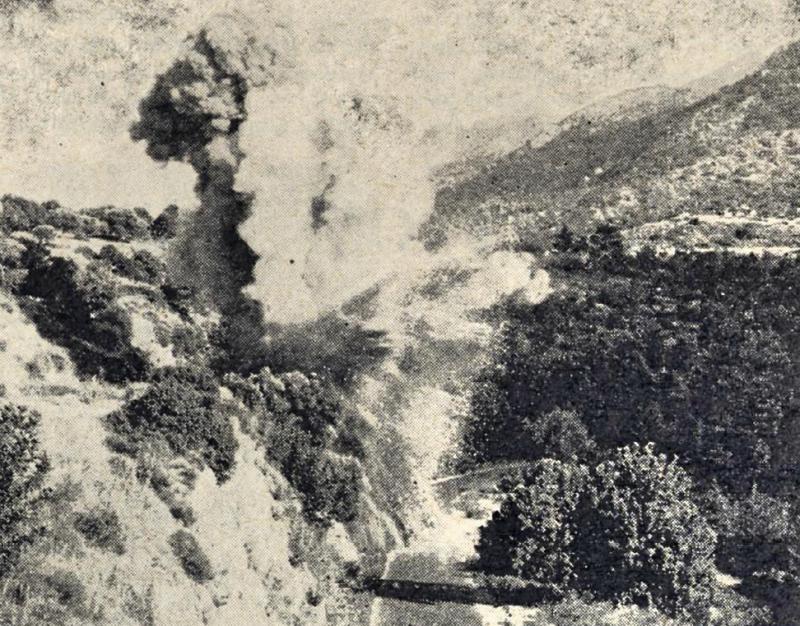
A large section of hillside that was threatening the safety of the road is removed using explosives.
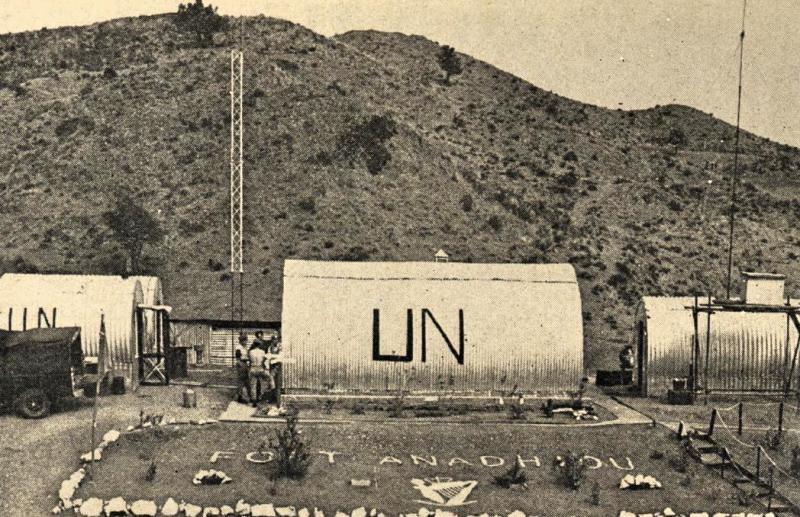
Fort Anadhiou occupied by soldiers of the Royal Irish Regiment. (See Then_Now)
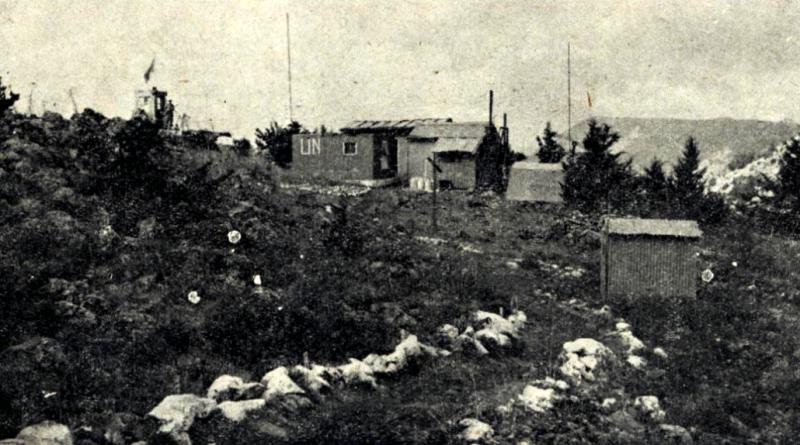
Hilltop OP in the Kyrenia mountains was home to one NCO and four soldiers.
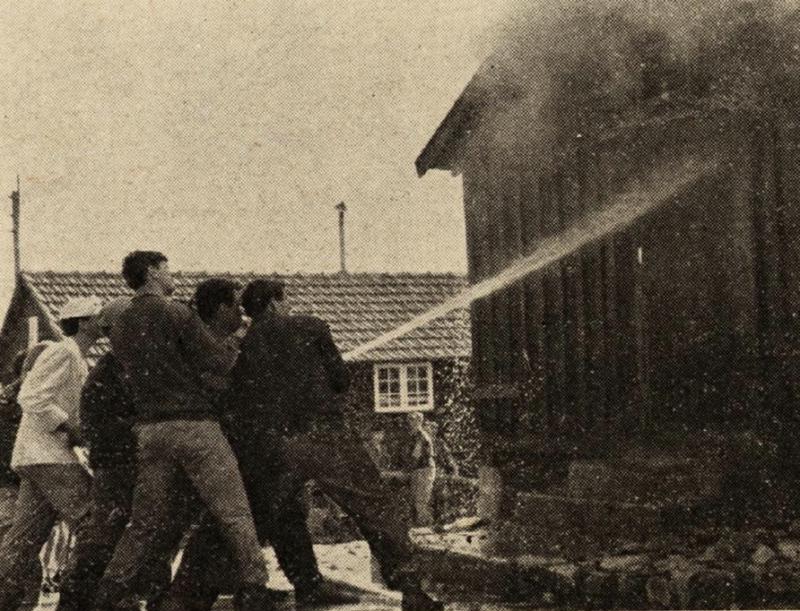
One of the original 1880 'Kitcher Huts' at Polemedhia burns with the fire picquet of the Royal Irish Rangers attempting to dampen the flames.
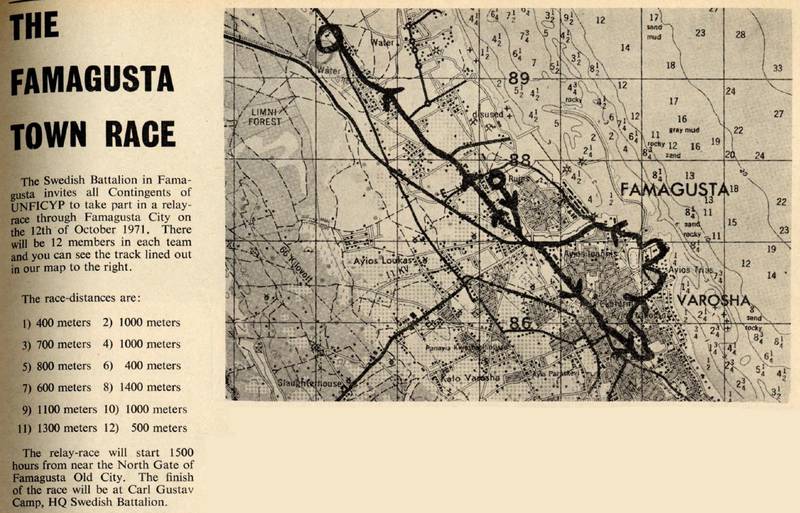
The Swedish Battalion organised a race through the streets of Famagusta.
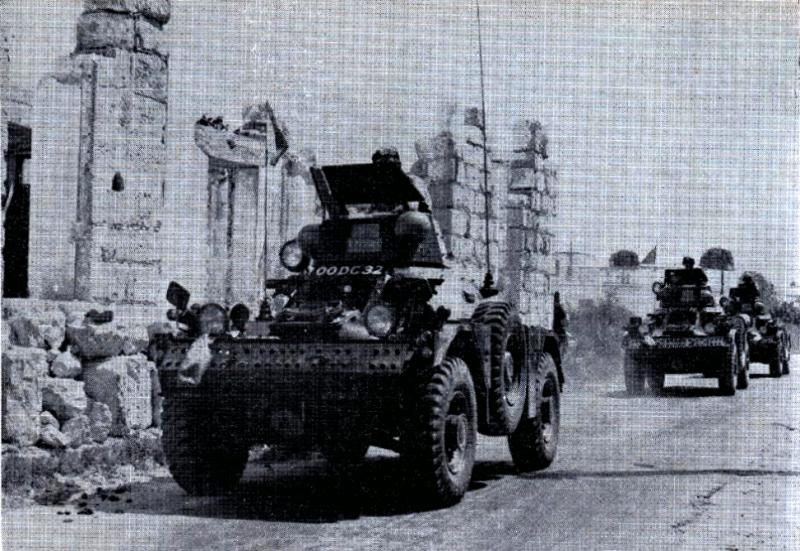
'A' Troop The Royal Hussars driving through a village in the Karpas peninsular.
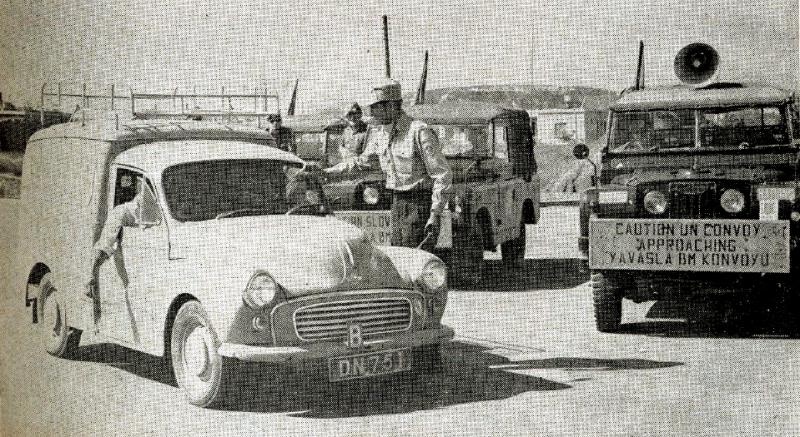
An Australian civilian policeman checks a vehicle about to join the convoy to Kyrenia. In the first six months of 1971, 34000 vehicles were escorted through the Turkish enclave. Convoy timings were Nicosia at 09:00 & 13:45hrs and departing Kyrenia at 07:00 and 17:30hrs.
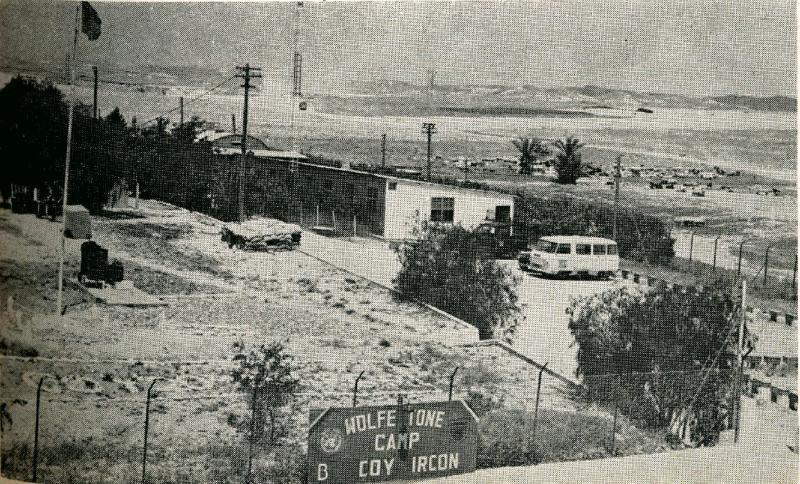
Wolfe Tone Camp at Larnaca belonged to the Irish UN.
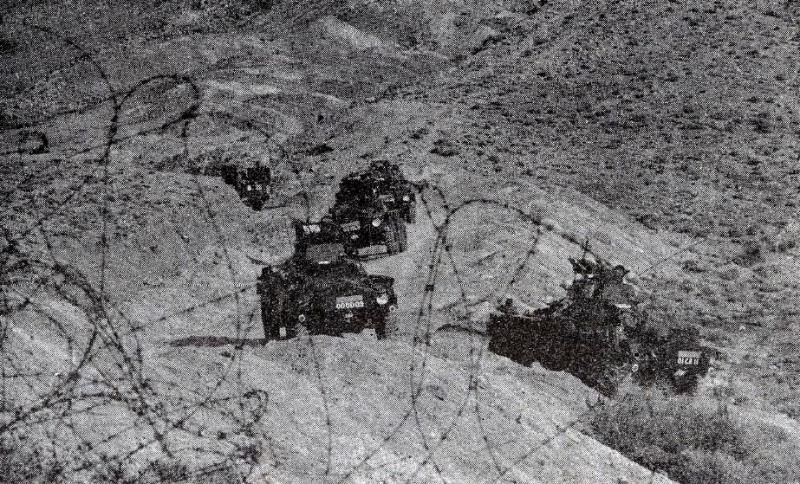
Armoured vehicles negotiating the contryside known as the "moonlands", less than 10 miles SE of Nicosia.
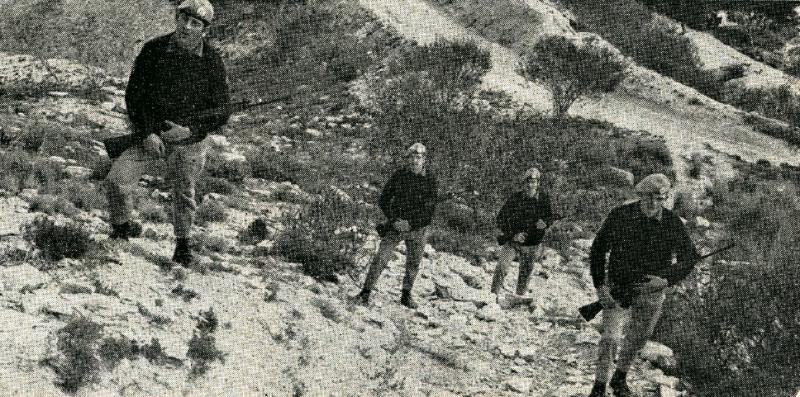
Irish UN soldiers take a breather as they climb Mount Stavros near Louroujina.

The twice daily patrol from Louroujina climbs to the unmanned OPs at Hill 1126.
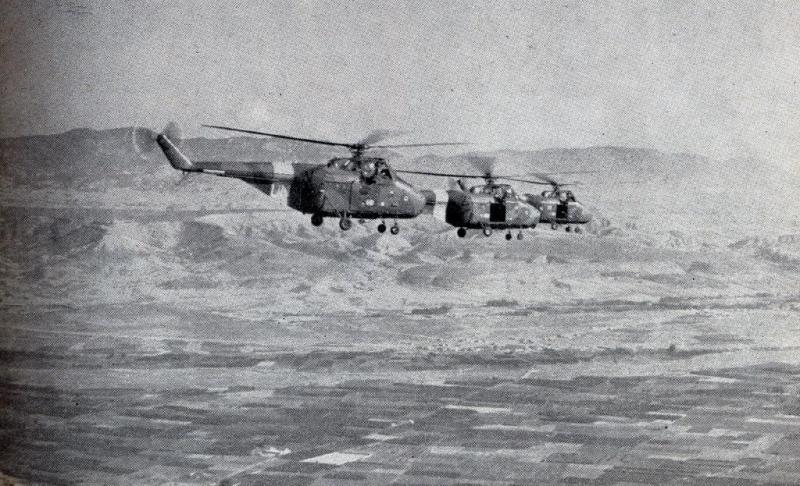
Whirlwinds of RAF 230Sqn fly over the central plain with the Kyrenia mountains in the background.
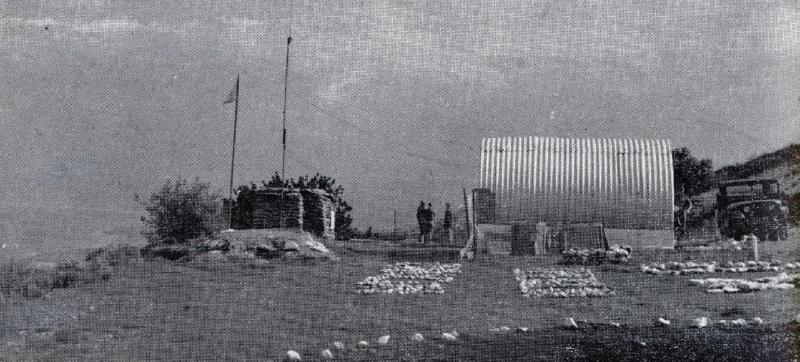
A view of the UN OP at the "Limekiln" above Kyrenia.
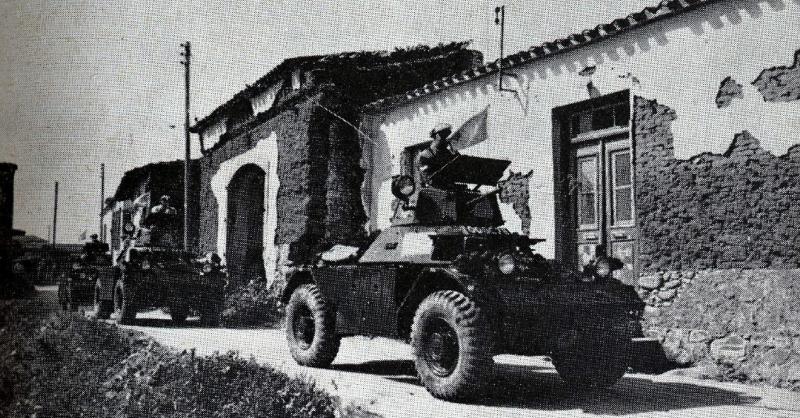
'C' Squadron of the Royal Hussars patrol through Turkish Cypriot village affected by the 1963/64 fighting.

A somewhat lighthearted article showing the skills of the QM's Dept.
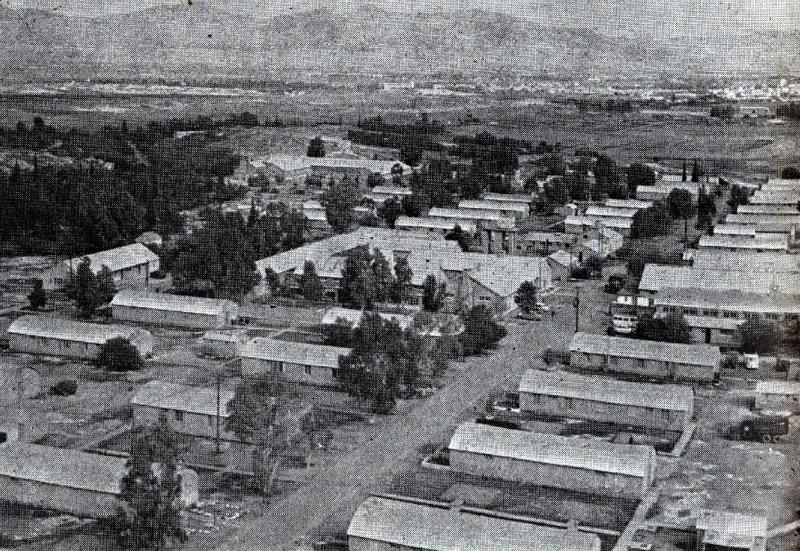
A view of Maple Leaf Camp on the old Nicosia Airport road.

A fine view of the Irish UN Camp at Louroujina which was established in May 1964. With the reduction in tension, the establishment has been reduced from Platoon strength to two NCOs and seven soldiers. The soldiers come from Larnaca and are rotated fortnightly.
The article date is 30th June 1971.













































